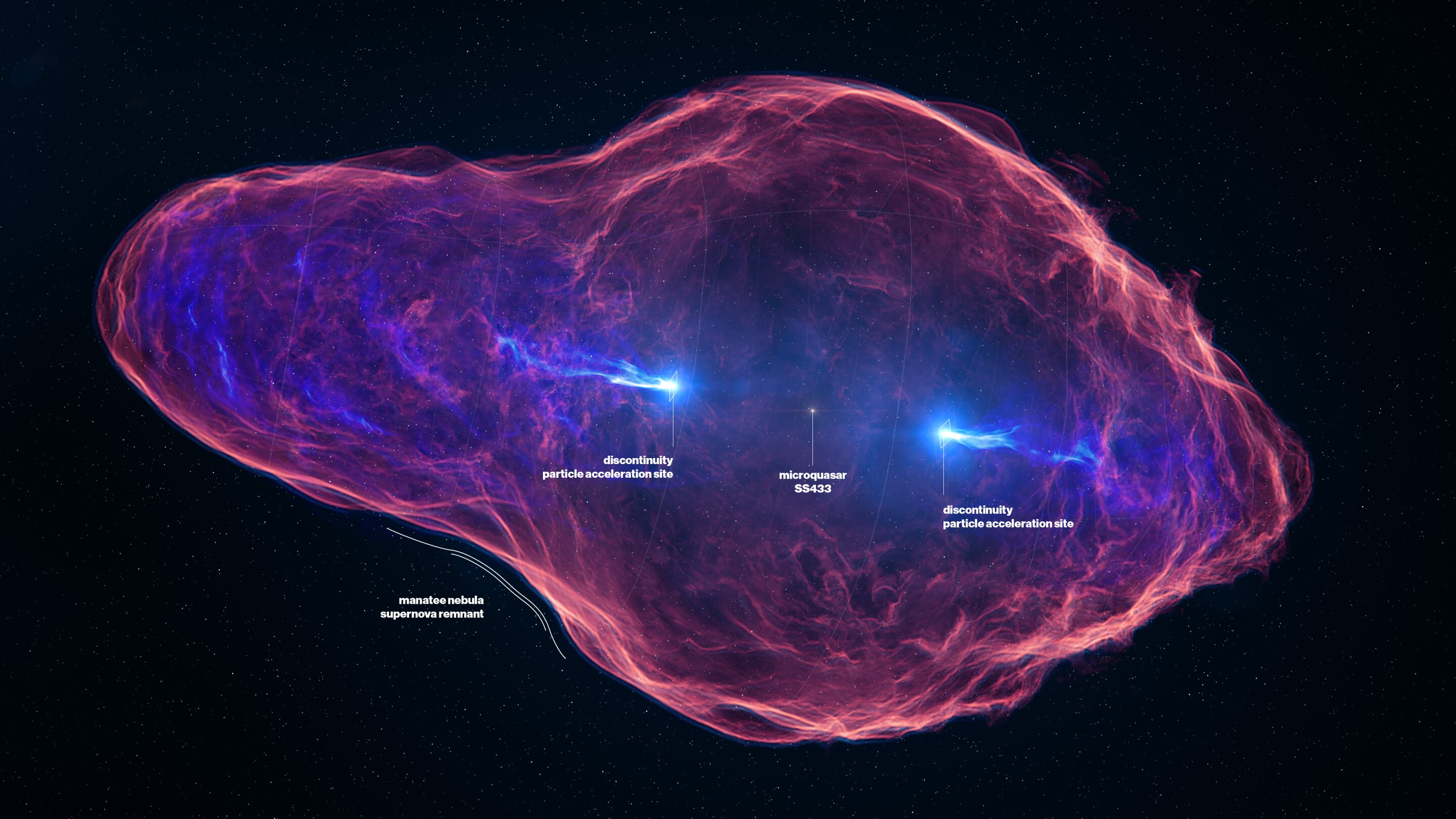The author Arthur C. Clarke considered SS 433 as one of the seven wonders of the world in a BBC television series in 1997. SS 433 attracted attention in the late 1970s due to its X-ray emission and was later found to be at the center of a gas nebula called the Manatee Nebula because of its shape resembling aquatic mammals.
SS 433 is a binary star system where a black hole, roughly ten times the mass of the sun, and a star, similar in mass but larger in volume, orbit each other every 13 days. Material from the star’s surface forms a hot gas disk that feeds the black hole, launching two collimated jets of charged particles at a quarter of the speed of light perpendicular to the disk. The jets of SS433 can be detected in the radio to X-ray ranges, until they abruptly reappear as bright X-ray sources around 75 light years from their launch site. Similar jets are observed emanating from the centers of active galaxies, categorizing objects like SS 433 as microquasars.
Notably, gamma ray emission had never been detected from a microquasar until 2018, when the High Altitude Water Cherenkov Gamma-ray Observatory (HAWC) successfully detected very-high-energy gamma rays from the jets of SS 433. However, the mechanism and location of particle acceleration within astrophysical jets remained unclear despite years of research.
The H.E.S.S. Observatory initiated an observation campaign of the SS 433 system following the HAWC detection, resulting in around 200 hours of data and a clear detection of gamma-ray emission from the jets of SS 433. The superior angular resolution of the H.E.S.S. telescopes allowed researchers to identify the origin of the gamma-ray emission within the jets for the first time. The energy-dependent morphology and the observed shift in the position of the gamma-ray emission at different energies were surprising findings. The scientists also estimated the velocity of the outer jets and suggested that efficient particle acceleration is taking place at the sites of the X-ray jets’ reappearance, which was unexpected.
These results provide valuable insights into the mechanism of particle acceleration in astrophysical jets and offer a unique opportunity to study this occurrence in relativistic jets due to the relative proximity of SS 433 to Earth. The hope is that these findings can be applied to active galaxies and quasars to solve the mysteries surrounding the origin of the most energetic cosmic rays.
The H.E.S.S. observatory, located in the Khomas Highlands of Namibia, provides a crucial tool for observing high-energy gamma rays using the atmosphere as a giant fluorescent screen. It is the largest and most sensitive telescope system of its kind, observing the southern sky in high-energy gamma light.
More information:
Acceleration and transport of relativistic electrons in the jets of the microquasar SS 433, Science (2024). DOI: 10.1126/science.adi2048













